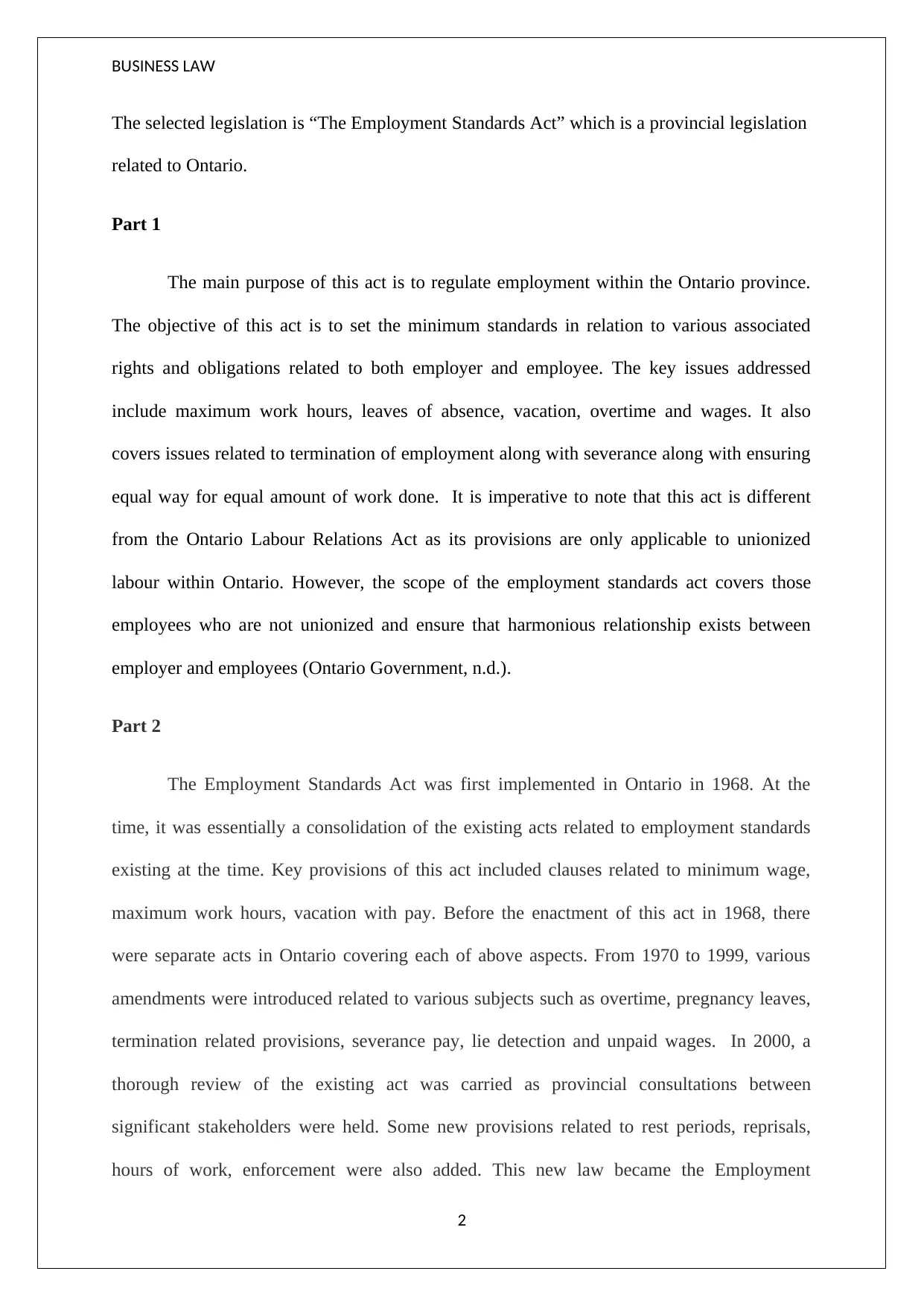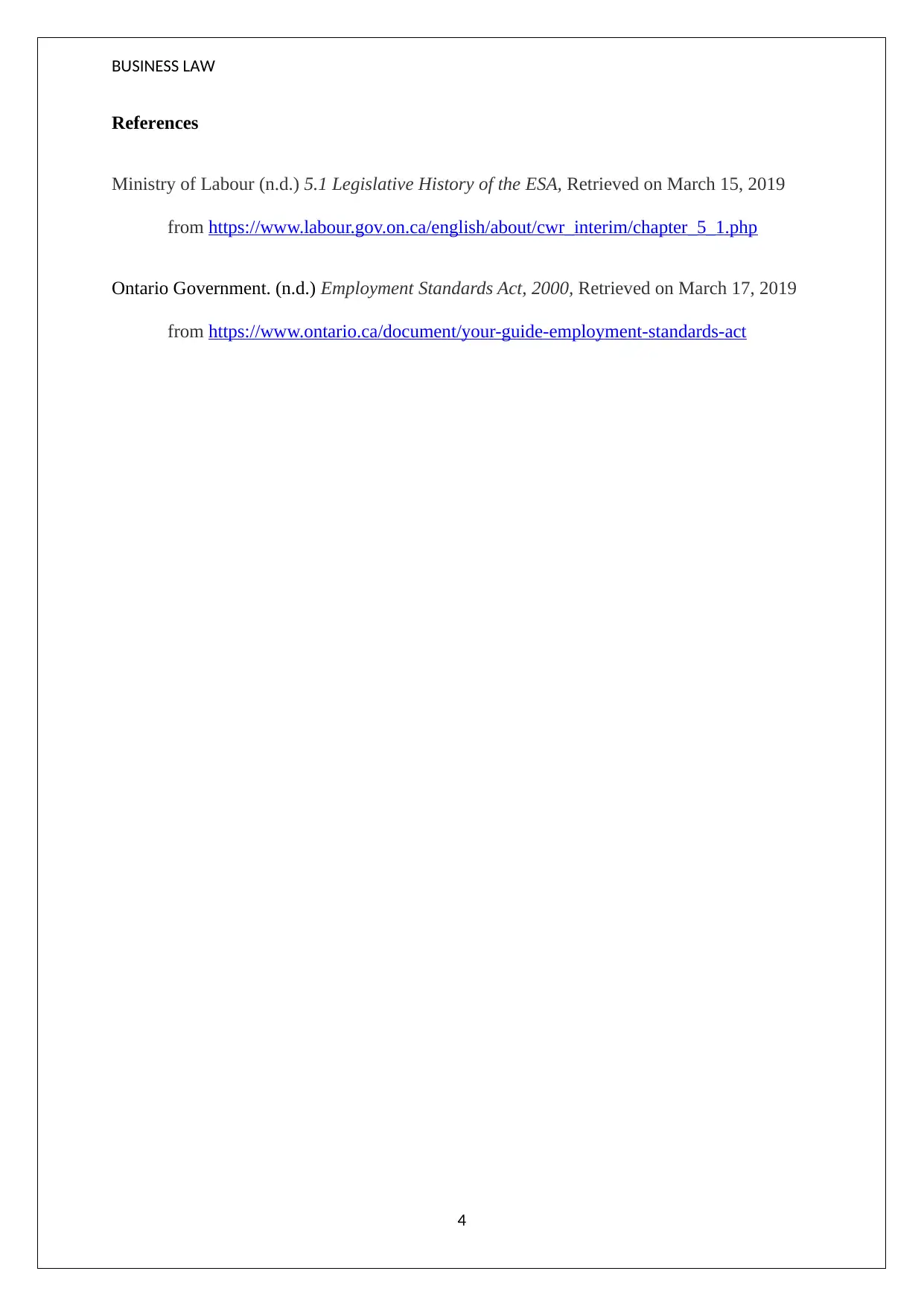The Employment Standards Act: A Comprehensive Guide
VerifiedAdded on 2023/04/06
|4
|509
|342
AI Summary
This article provides a comprehensive guide to the Employment Standards Act in Ontario. It explains the purpose and objectives of the act, its legislative history, and the enforcing authority. It also covers the key provisions of the act and how to file a claim for violation of its provisions.
Contribute Materials
Your contribution can guide someone’s learning journey. Share your
documents today.
1 out of 4










![[object Object]](/_next/static/media/star-bottom.7253800d.svg)